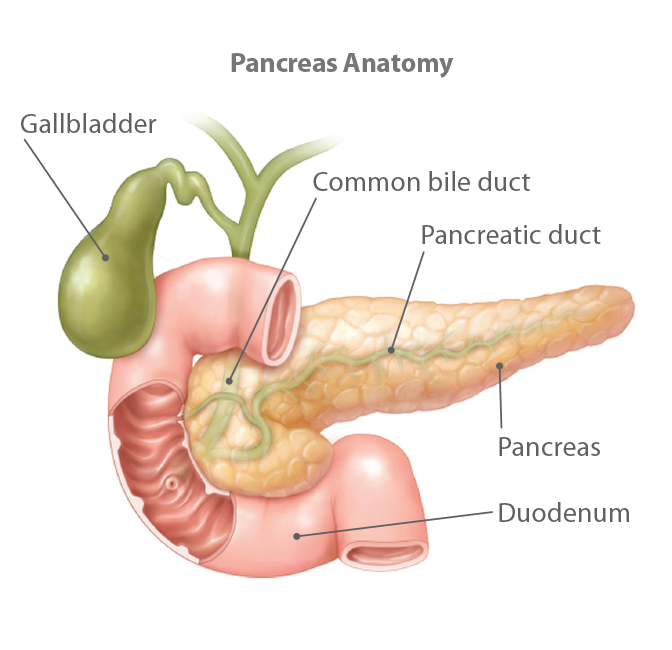Understanding pancreatic cancer
Pancreatic cancer is an aggressive form of cancer that develops in the tissues of the pancreas. Located in the abdomen behind the lower part of the stomach, the pancreas aids in digestion. It contains both exocrine glands (which produce enzymes that help the body digest food) and endocrine glands (which produce hormones, including insulin, that help control blood sugar levels in the body).
There are two types of pancreatic cancer: cancer of the exocrine gland and cancer of the endocrine gland. About 90 percent of pancreatic cancers begin in the exocrine cells of the pancreas.
Types of pancreatic tumors
Pancreatic cancer forms from two types of tumors:
Exocrine tumors: Most tumors affecting the exocrine gland are called adenocarcinomas. This type of cancer forms in the pancreas ducts. Treatment for these tumors is based on stage of growth.
Endocrine tumors: These tumors, also called islet cell tumors, are less common and most often benign. Though rare, cancer stemming from an endocrine tumor affects the hormone-producing cells.
Stages of pancreatic cancer
The stage of pancreatic cancer is one of the most important factors in evaluating your treatment options.
STAGE 1 (resectable): The tumor nodules can be removed.
STAGE 2 (locally advanced): The cancer has spread to the tissue surrounding the pancreas.
STAGE 3 (locally advanced): The cancer has reached the blood vessels near the pancreas.
STAGE 4 (metastatic): The cancer resides in multiple organs.
Doctors may also give a grade to pancreatic cancer. Much like the stages of pancreatic cancer, grades help classify how aggressive the tumor is, and how likely it is to grow and spread to surrounding tissue and other locations in the body.
Grade levels range between 1 and 4 with G1 (grade 1) denoting cancers that look similar to normal cells, and G4 (grade 4) denoting cancer cells that are highly abnormal in appearance.

